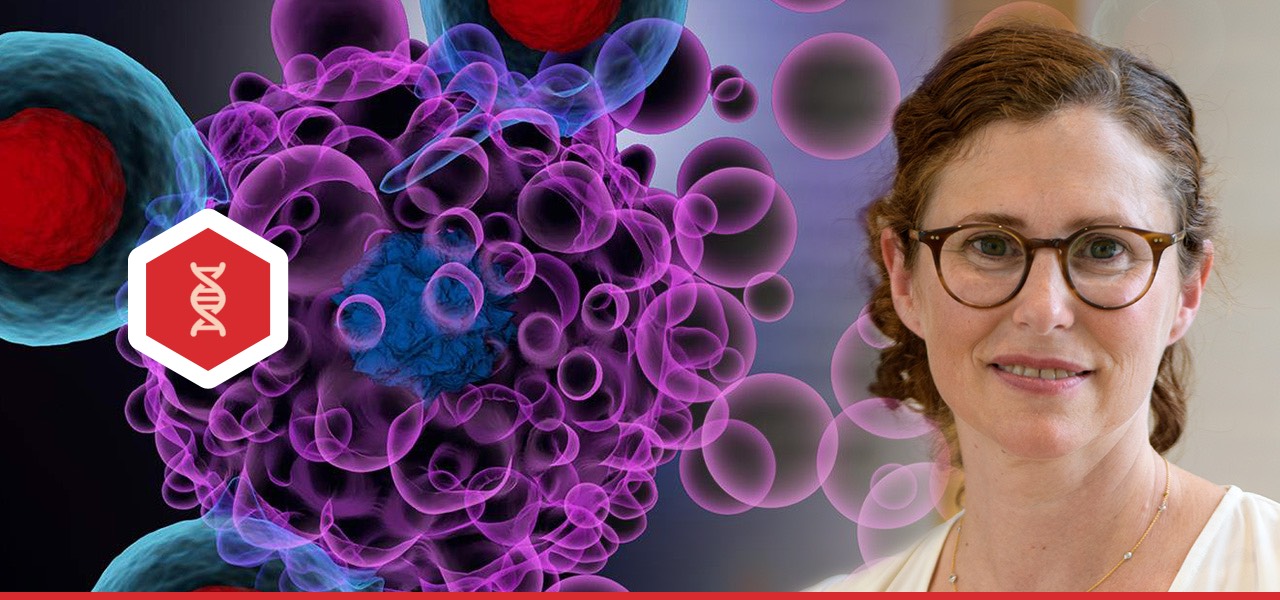
Immunotherapy has a great deal of potential for cancer patients, but for it to work, the immune system must be able to spot the tumor. Fortunately, new research by Weizmann’s own Prof. Yardena Samuels and her team is helping to do just that, and it could lead to off-the-shelf therapies being developed for entire groups of patients.
Prof. Samuels, her PhD student Dr. Aviyah Peri and their colleagues have now developed a method for identifying cancer “hotspots,” which are features that are common to many tumors and can therefore be used to develop effective immunotherapy for entire groups of patients. The researchers have already used the method to identify a hotspot characteristic of a particularly aggressive form of melanoma in one major subset of patients.
What do cancer hotspots look like?
Cancer hotspots are physical structures on cancer cells’ outer membranes that can provide the immune systems of multiple patients with “access” to a tumor. These molecular structures contain mutated peptides called neoantigens that the immune system’s T cells recognize as foreign – the first step in binding to the neoantigens and killing the cancerous cells. In fact, this T cell action is the ultimate goal of all types of immunotherapy, so scientists have been using neoantigens to prime T cells for a successful attack. However, since most neoantigens result from unique mutations characteristic of individual tumors, when a particular neoantigen is used to activate a patient’s T cells, the same therapy cannot be applied to other patients. Only a handful of neoantigens – those derived from recurrent mutations appearing in numerous patients – qualify as hotspots, but these are hard to find. Part of the difficulty stems from the fact that the neoantigens on the cellular membranes are presented to the immune system by protein complexes called HLA, and these complexes come in thousands of versions, so together with the cancerous mutations, there can be millions of individual variations. Because of this enormous variability, hotspot neoantigens have until now been found mostly by luck.
How are they being identified now?
In the new study, Weizmann’s team has developed a method for identifying these cancer hotspots in a systematic manner. Referred to as a “data-driven approach to identifying recurrent neoantigens,” it involves bioinformatics followed by lab analysis.
As the first step, the scientists applied algorithms to search through international databases containing information on the genomes of thousands of cancer patients. Focusing on melanoma, the main cancer type studied by the Samuels lab, they surveyed oncogenes, looking for common mutations presented by common forms of HLA. The team’s search produced a number of neoantigens that could potentially be considered hotspots. Next, the scientists subjected these candidate molecules to laboratory analysis known as HLA peptidomics, in which they isolated the mutant peptides from the HLA complexes and investigated their interactions with T cells.
Using this approach, the scientists identified a hotspot neoantigen derived from an oncogene known as RAS, which is involved in causing a third of all human cancers. This neoantigen, belonging to a form of RAS that causes a particularly aggressive form of melanoma, appears in some 20 percent of melanoma cases. In collaboration with Friedman and Satpathy, the scientists isolated the T cell receptor that can recognize this hotspot neoantigen in melanoma tumors. They then engineered T cells from healthy individuals to express this receptor and incubated them in a test tube with tumor samples from patients whose tumors displayed this hotspot. The T cells were activated by the neoantigen, killing the tumor cells in a highly specific manner – that is, only those cells that displayed the neoantigen.
“We’ve uncovered a neoantigen that is expressed in thousands of new melanoma cases every year, and we’ve shown that it can be used in these patients to mark tumor cells for immune destruction,” Peri says.
“Our study suggests that our newly developed platform can lead to ‘off-the-shelf’ immunotherapies in which T cell receptors that recognize cancer hotspots can be prepared in advance, ready to be applied in groups of patients whose tumors have been shown to harbor these hotspots,” says Samuels. Such treatments would be easier and cheaper than tailoring personalized T cells to each new patient.
Yet another major advantage of this approach is that it makes use of hotspot neoantigens derived from oncogenes. When an oncogene like RAS is active in a tumor, it is expressed in all tumor cells. This means that the hotspot immunotherapy is more likely to wipe out the entire tumor, rather than only parts of it, as was the case with therapies that targeted neoantigens present in only some of the tumor cells.
“Our novel approach may make it possible to apply personalized treatments on a larger scale than today,” Samuels says. “It is ready to be developed for use in hospitals, and it can be applied to a variety of cancers, not only melanoma.” Yeda Research and Development Company, the Weizmann Institute’s technology transfer arm, is currently seeking to promote the method’s development for clinical use, through a company that is being established to this end.
